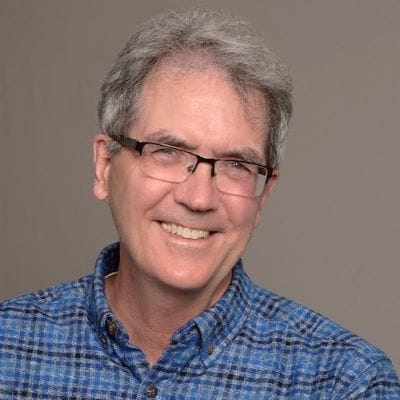North Loop Among ‘Freeways without Futures’ in New National Report
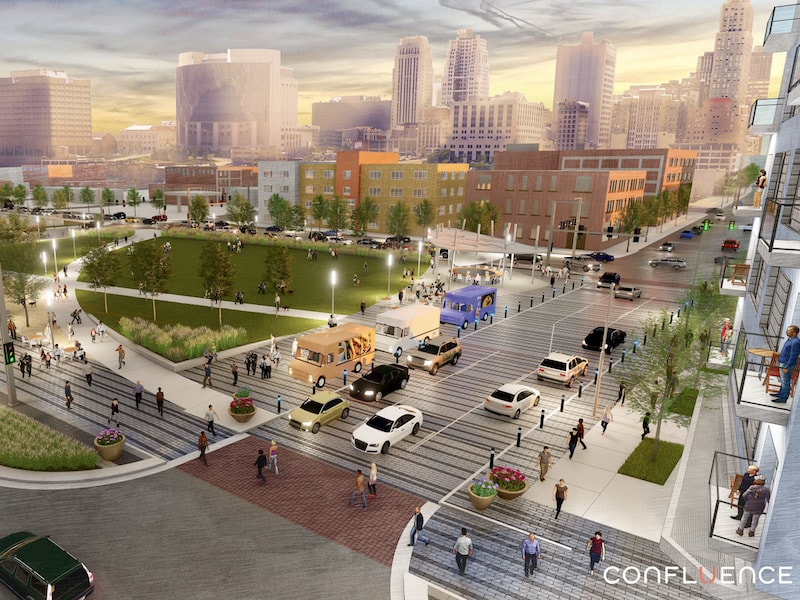
Published October 6th, 2021 at 11:30 AM
(Editor’s note: CityScene is taking some time off for a vacation, this article originally appeared on June 2.)
By Kevin Collison
The downtown North Loop is among 15 freeways throughout the country that should be removed and their tracks revitalized according to a new report by a national non-profit organization that champions “walkable urbanism.”
The “Freeways Without Futures 2021” report by the Washington D.C.-based Congress for The New Urbanism (CNU) also supports lowering Missouri 9 to grade and reconnecting Independence Avenue, reuniting the River Market and Columbus Park neighborhoods.
If the interchange between Missouri 9 and the North Loop was eliminated, it would free up about five city blocks, the CNU report estimated.
All three CNU recommendations–North Loop removal, lowering Missouri 9 and reconnecting Independence Avenue–also were key conclusions of the Beyond the Loop study conducted four years ago by the Mid-America Regional Council.
The new CNU report referred to that earlier homegrown concept.
“In Kansas City, there’s a plan to disentangle the northern part of downtown from the highways like the North Loop that envelope it and reincorporate it back into the rest of the city,” the CNU report stated.
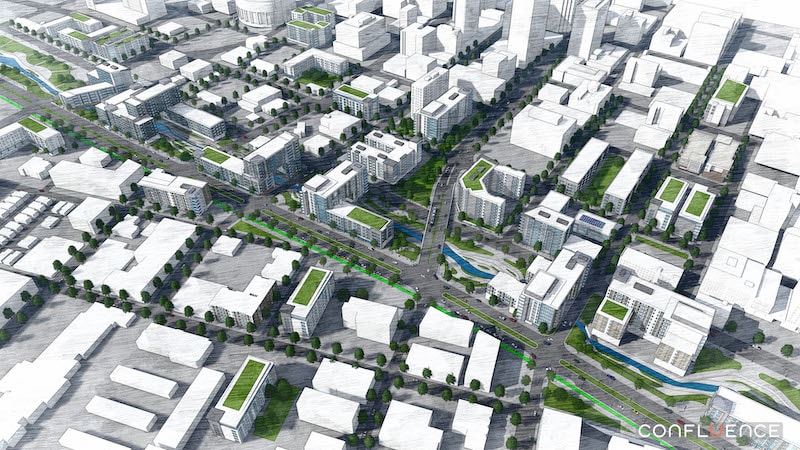
Overhead view of how the North Loop corridor could look if the freeway was removed and revitalized. (Rendering by Confluence)
“Beyond the Loop offers a chance to play the long game and provides a step-by-step blueprint to prepare the city to reap the overwhelming social, environmental and economic benefits from the North Loop’s removal.”
The new CNU report is the latest national spotlight on the barrier caused by the North Loop, which carries I-35 and I-70 traffic through downtown.
It’s part of a freeway “loop” built in the 1960s that cut off the central business district from its surroundings.
Last week, The New York Times included the North Loop in a report about proposals to remove aging highways that divide cities around the country. In 2017, the Urban Land Institute agreed with many of the Beyond the Loop recommendations.
The Times also reported President Biden is including $20 billion to help reconnect neighborhoods split by highways in his proposed infrastructure spending plan.
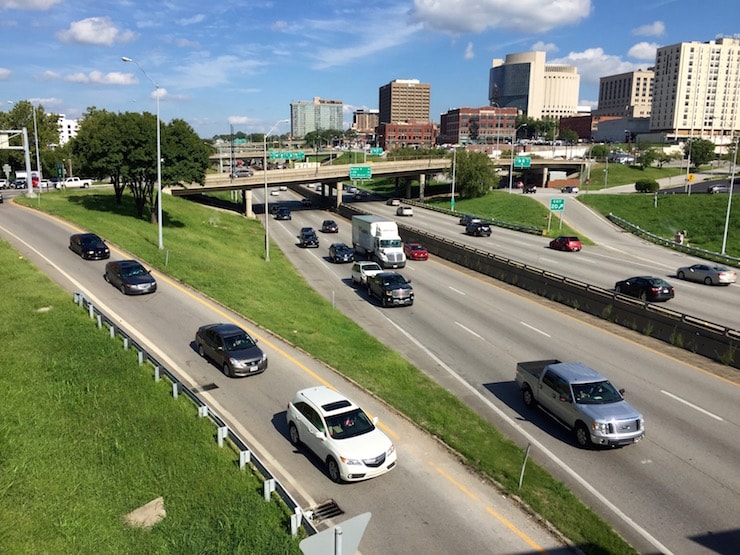
The North Loop separates the Central Business District from the River Market.
Gould Evans, a local architectural and planning firm, recently weighed in on the subject, calling for the North Loop to be removed and replaced with a 30-acre “Central Park.”
“We can’t afford the infrastructure that our city has built and in this case (North Loop), MoDOT has been willing to consider the abatement of that roadway,” said Dennis Strait, managing principal at Gould Evans.
“It’s been a scar on our downtown and it would be great to remove it.”
Officials with the Missouri Department of Transportation could not be reached immediately for comment.
Despite the local and national criticism however, there have been no concrete steps so far to implement the Beyond the Loop recommendations. A companion concept, decking the South Loop with a park, also remains in the conceptual stage.
The Downtown Council, along with the city and other civic organizations, is studying the downtown freeway loop as part of its Imagine Downtown KC 2030 Strategic Plan.
“The future of the North and South Loops will be envisioned in the strategic plan as ‘Loop Reimagination,’ one of seven catalytic projects designed to transform the future of Downtown Kansas City,” according to a statement from the Downtown Council.
“Removing or minimizing these barriers presents opportunities to improve vehicular, pedestrian, bicycle and transit connections, as well as provide cohesive visual connections to the River Market and the Crossroads District.
“Both projects unlock land for development by mitigating, condensing, lidding or removing the interstates.”
The CNU report describes the Central Business District as being ‘penned in on all four sides by Interstate highways.
“The north side of this loop is particularly invasive, a tangle of ramps, interchanges, and highways that separate three neighborhoods: the Central Business District, River Market, and Columbus Park, from each other.
“Prior to the highways, Independence Avenue seamlessly linked all three neighborhoods.”
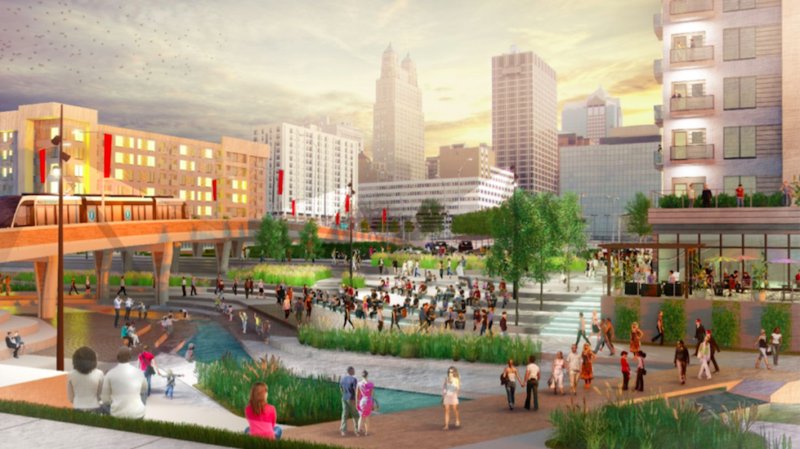
Another image depicting how the River Market could be reconnected with rest of downtown if the North Loop freeway was removed someday. (Rendering from Confluence)
The CNU “Freeways Without Futures” report also cites a MoDOT study that found the new Buck O’Neil replacement bridge, when completed, will reduce traffic on Missouri 9 to about 12,000 vehicles daily, less than some current downtown streets.
“Traffic studies undertaken as part of the Buck O’Neil Bridge rebuilding suggest that the removal of the North Loop, the redesign of Route 9 as a city street and the reconnection of Independence Avenue…were all feasible without noticeably increasing travel times.
“This raises a significant question: if expensive highway infrastructure wasn’t necessary to serve Kansas City’s transportation needs, what else could be built in its place?”
The Downtown Council expects its new strategic plan will be a catalyst for implementing design and funding plans to substantially reduce the negative effects of the downtown highway system.
“The North and South loops and the overpasses of Highway 9 are prominent Downtown design features,” according to the Council.
“They are also antiquated, dangerous and frustrating barriers between neighborhoods and the subject of plans and dreams for decades.”


